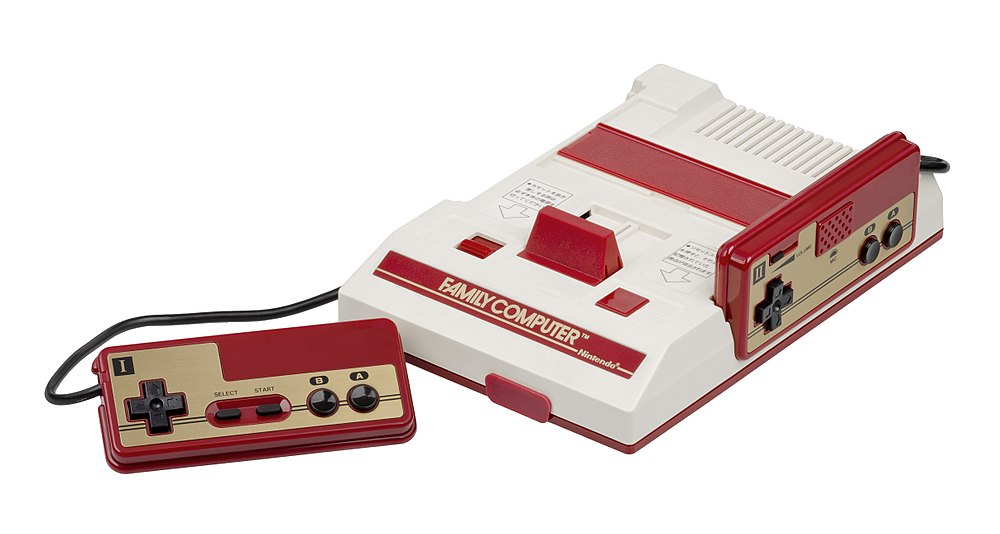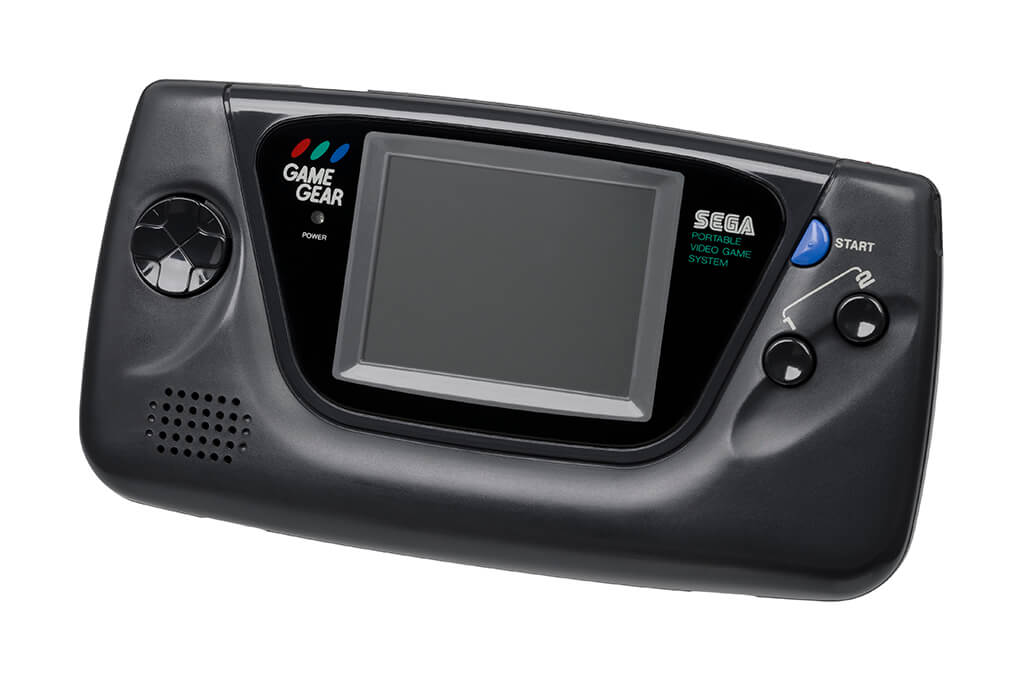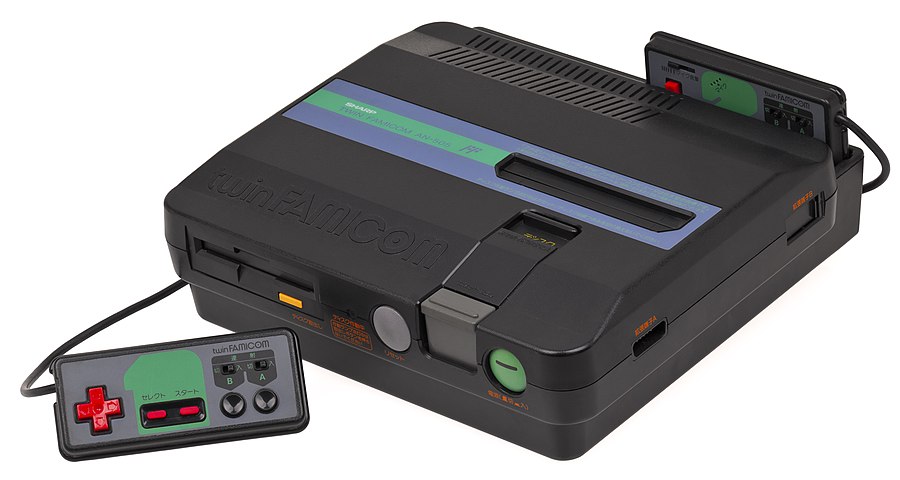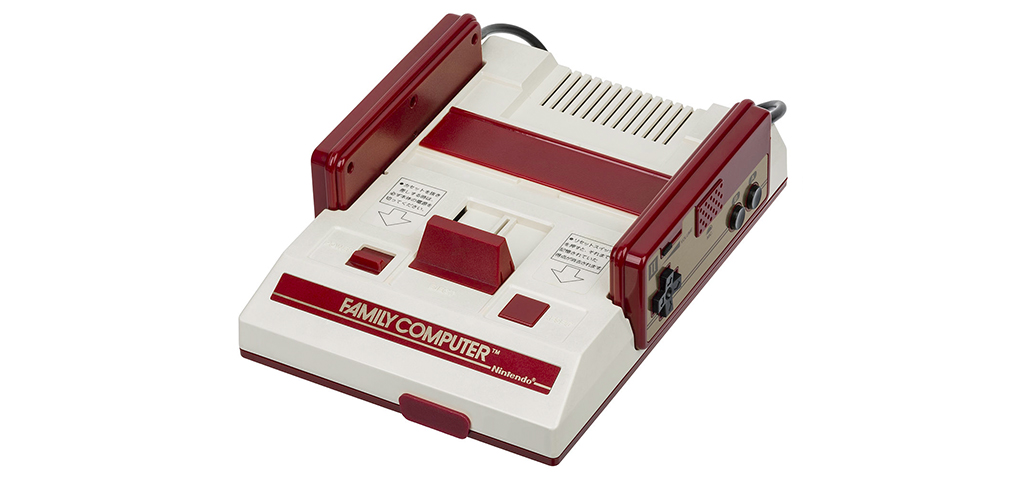The 8 bits of all life, ladies and gentlemen, the generation that saved consoles from a fatal fate after the Crash of ’83, the one that stood up to microcomputers such as the ZX Spectrum and Amstrad, the generation that further expanded the player base and the one that raised Japan to stardom, becoming the gaming mecca we all know and some of us idolize. One of the generations most longed for by all, the generation of the NES and the Master System, the third generation of video game consoles.
START DATE: 1983
FIRST CONSOLE: Nintendo Family Computer (Famicom/NES)
- Consoles of the third generation in Infoconsolas.
- The third generation of consoles, background.
- The third generation of consoles, course.
- The third generation of consoles, legacy and consequences.
- The public of the third generation of consoles.
- Games of the third generation.
- Collect consoles of the third generation.
- Buy consoles of the third generation.
- FAQ second third generation of consoles.
Consoles of the third generation in Infoconsolas
Below we leave you the links of the consoles of this generation that we have analyzed in Infoconsolas. Little by little we will be updating the contents and expanding the articles, so do not forget to stop by our blog or here in a while. oh! And if you are here, surely you are interested in our 100% Retro Twitter.
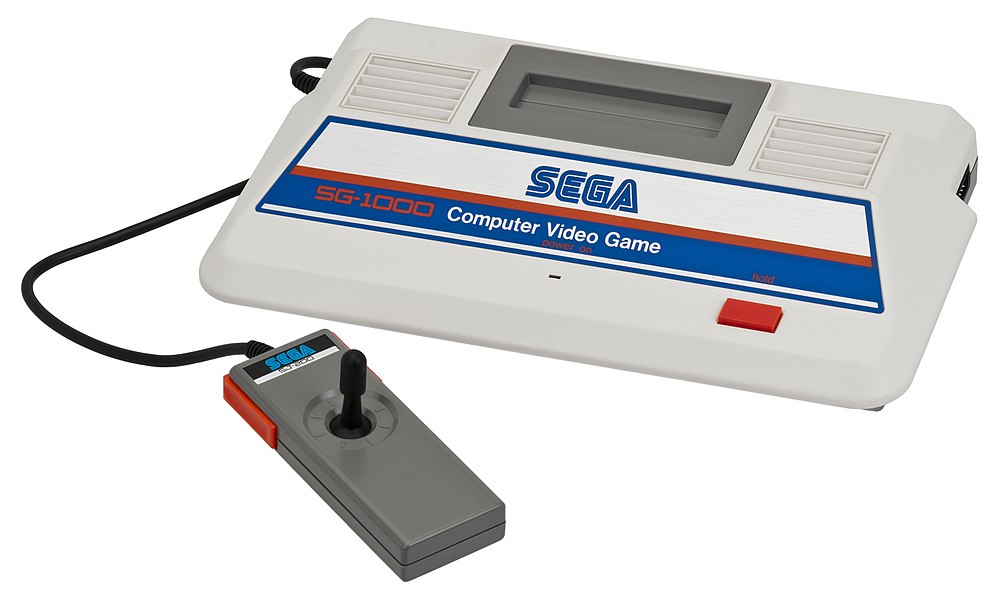
The third generation of consoles, background
The second generation of consoles was one of the most interesting periods in the history of consoles and video games. With the almighty Atari ruling the market and the United States as the cradle of video games, there were many companies and countries that tried to take a piece of the cake with more or less luck. Fortunately for us, this caused a multitude of technological advances and a tremendous evolution in terms of video games, which lived their glory years in arcades.
From some variants of Pong in the first generation of consoles, we went on to the emergence of a whole world of new proposals, crystallizing in the creation, the origin of most of the genres that we know and play today: Martians, fighting, platforms, shooting, horror… An explosion of originality and creativity that the programmers put into the new format called cartridges. An incipient and round business that caught the attention of many manufacturers and developers, perhaps too many.
After a few years of dream arcade games, Atari and its Atari 2600, followed by the rest of its competitors, conquered the world and consolidated a new hobby and a new industry. But in a few years the situation would take a significant turn: the excess of competition and existing systems, the lack of quality control in the launches (mainly in the Atari 2600) which caused a loss of confidence in the video game market, and the arrival of microcomputers with their theoretical benefits for the education of children compared to consoles that were only used to play, all these factors caused the Crash of 1983, one of the most difficult stages that video games have experienced so far. throughout history: The image of video games changed drastically from being seen as family entertainment, to a waste of time that made our children addicted to “the little machine”.
Different lobbies such as the toy industry, together with parents’ associations, brought out all the artillery and attacked an industry with no experience in these image struggles, unorganized and already diminished due to the causes mentioned in the previous paragraph. The result was the death of a great generation of consoles, with really advanced machines that explored by trial and error the new paths of consoles and video games: Telephone connection? Downloading games by cable? Converting our console on a computer?, a portable console? Yes, all these functions were already available in the second generation, and the Crash of 83′ took them away. Magnificent consoles such as the Vectrex with vector graphics, the 16-bit Intellivision or the ColecoVision, not having enough units sold and a consolidated market base, practically fell into commercial oblivion.
To contextualize the situation, keep in mind that the acquisition of a video game console in those years was practically the salary of an average family, so it was normal for a family to acquire a console every 4 or 5 years, being very difficult to justify the purchase of another console, solely for an improvement in graphics. If we add the option of acquiring for a lower or equal price, a microcomputer like the Commodore, MSX or Spectrum, with which you were supposed to keep the accounting of the home, connect with the bank and have a programmer son/genius with prescription glasses and smiling, the consoles had everything to lose. And they lost.
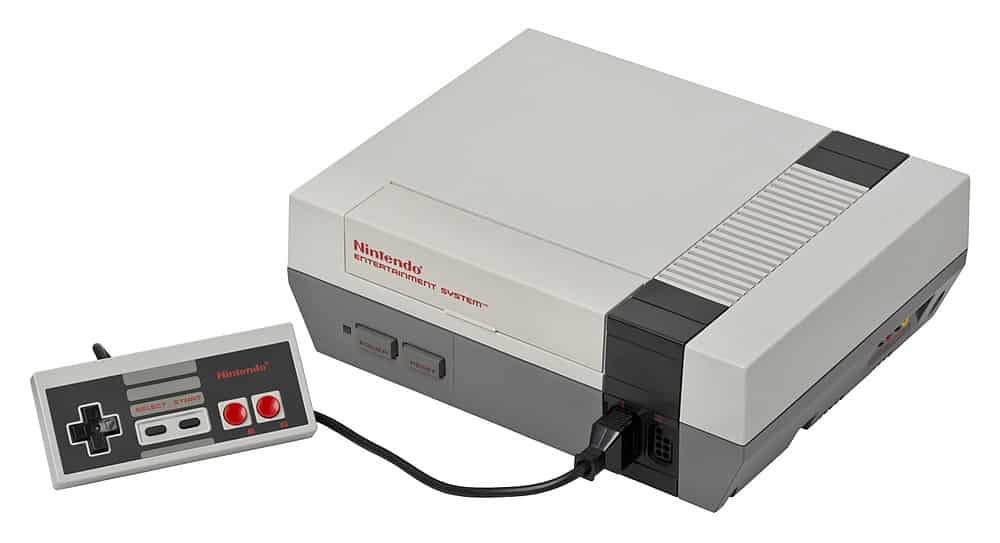
The third generation of consoles, the rebirth
And they lost and were reborn like a Phoenix, and hope came from the East, from the country of the rising sun to be exact. Japan had perfectly integrated into its economy for decades, everything related to North American technology and electronics. From a cheap hand in charge of American-Japanese companies dedicated to manufacturing transistors, watches and similar products, Japan had become a giant that, in the 1980s, presented itself as a tough rival for the American state economy, as Japan the technological factory of the world. Japan exported and the United States imported, a bad deal for the latter.
But not only economically, thanks to American-Japanese companies like Sega, electronic and mechanical entertainment had arrived in Japan decades ago and had a strong impact on society, integrating it to its roots and customs: From music jukeboxes for soldiers who they remained in the US military bases located on Japanese soil, they moved on to electro-mechanical recreational games such as clay pigeon shooting, bowling alleys or the like and later, in the 1970s, to the video game arcade machines themselves and the first consoles.
The integration process in Japanese society was very similar for each new product, of American invention and manufacture, imported in the first years to Japan for the American bases, they were implemented in the rest of the Japanese territory for the Japanese public, later passing to be manufactured on Japanese soil, thus lowering costs and, later, once its success has been proven, be copied, modified and, on many occasions, improved, by purely Japanese companies, without the Japanese government allocating many resources to sanction and search for patent infringements.
In this way, Japan absorbed everything that came from the cradle of video games and became the Mecca of video games. In the 70’s and early 80’s they created a powerful video game industry with their own philosophy, from licensing consoles, arcades and technology they went on to create within their borders their own industry adapted to their culture and customs, creating their own hardware and software so characteristic and differentiated from the West. In Japan there was no crisis of 83′, they had set themselves apart and assumed video games as one more part of their society and culture, they made them their own and became first self-sufficient and then exporters. An empire was born that would conquer the world, but this time from east to west.
Why at Infonconsolas do we give so much importance to the emergence of Japan? Because they were the ones who saved video games as we know them, overcoming the Crush of 83′..
The third generation of video games began on the same day in Japan with the simultaneous launch on July 15, 1983 of two mythical consoles, the Nintendo Family Computer or Famicom and the SEGA SG-1000. Nintendo and SEGA began in this way one of the periods that has given all fans the most joy, “the console war”, a commercial conflict that lasted almost two decades and that divided the world in two, in the numerous generational battles .
As its name suggests with the Family Computer, Nintendo opted for a strategy based on the possibilities of its system as a “computer”, trying to win the choice of parents. In this way, the console was launched with peripherals such as a keyboard and cassette to save our programs made in BASIC with its corresponding cartridge, even having the possibility of acquiring modems to connect to the bank… All this to make up its video game aspect, it is In other words, a console far superior to everything that exists when it comes to consoles, which included controls designed by Gunpei Yokoi himself, creator of the Game Boy and recovered from his Game & Watch, what we know today as the pads. The Famicom was a technological revolution at the time it was launched thanks to its architecture and Nintendo’s experience in arcade machines, with its first three launch games being authentic console sellers, ports of its arcade games: Donkey Kong, Donkey Kong Jr., and Popeye.
Instead, SEGA went bare-faced and released a console that was completely focused on video games, the SG-1000. In those years, SEGA already enjoyed great prestige in arcades with its arcade machines, so giving way to the domestic market, adapting one of its boards to a console, made all the sense in the world. In addition, for those who wanted a computer, SEGA already offered them the SC-3000 compatible with the SG-1000 and with a cartridge slot. SEGA’s console sold well for the first year, but was quickly outdated technologically, the Famicom being noticeably superior.
True to its policy, SEGA launched two new consoles to match and even exceed Nintendo’s performance, with the SG-1000 II they introduced the cards (cheaper than the cartridges) and with the Sega MARK III (the equivalent of the European Master System ), they caught up with the Famicom/NES, surpassing it in many technical aspects. With these two consoles, Nintendo and SEGA brought arcade games to homes with a quality never seen before and succeeding in Japan. Hopeful for their overwhelming success in their native country, they were preparing to storm western markets, with Nintendo being the best positioned due to its higher number of sales in the country of the rising sun. Meanwhile, remember that most Americans and Europeans were playing with their Atari 2600 or their (wonderful) Spectrum, Amstrad, Commodore and the like.
In 1985 Nintendo launched its Nintendo Entertainment System, the NES, in different North American cities with the market research model, in this way city by city, Nintendo was positioning itself until its total launch at the end of 1986, once its success was proven. . Nintendo did not have it easy at all, in 1985 video games in the United States were a failed product, and as if this were not enough, the image of Japan, being the new industrial center of the world, was very negative in the USA, blaming it for all the ills (Do you remember the movie Gremlins?). Faced with this situation, Nintendo opted for the following strategy:
- Telemarketing campaign focused on convincing retailers to accept this new product, freeing them from commercial risks. Authentic industry sales professionals were hired and did a wonderful job starting with New York.
- Clean image, the NES was not a video game console, it was an entertainment center as well as a technological toy, which included a futuristic robot, the R.O.B with the Gyromite video game and a light gun with the mythical Duck Hunt.
- Its seal of quality, this seal ensured that there would be no more frustrated and disappointed customers after purchasing a cartridge, as was the case with other consoles such as the Atari 2600.
- Aesthetic redesign adapted to the American market. The bigger the better! A commercial simplism that worked in those years. The NES was a brick compared to the Famicom, which also had the front opening with a lid as an association with VHS, moving away from the direct top loaders of most consoles of the time.
In this way, the NES penetrated and conquered the North American market, the cradle of video games, reviving a hobby that many believed was destined for oblivion… nothing could be further from the truth. Nintendo paved the way for SEGA and subsequent releases from other brands such as Atari, with its undervalued and unknown in these parts Atari 7800 or Atari XEGS. Thus began the reign of Nintendo with its 8-bit console.
For its part, Sega refurbished its Sega Mark III as the Master System that we all know, a beauty destined for export in Europe, where it was successful, and in the United States, where it could do nothing against the NES, later SEGA would launch the Master System II, most popular model in Europe due to its cheaper price. For Japan, the Famicom triumphed with more than 90 percent of the market, causing many companies to reject fighting against it in the 8-bit ring, and develop more powerful 16-bit consoles.
Even so, there were companies that dared to enter the third generation of consoles with machines such as the Philips Videopac+ G7400, the Casio PV-1000, the Action Max or the Super Cassette Vission, among others. As you can imagine, all the named consoles are collector’s items today, due to the few sales they had.
The third generation passed with many more glories than sorrows, enjoying good health until practically the mid-90’s, so they coexisted for years with much superior consoles such as the Snes, MegaDrive, PC-Engine or Neo Geo. This singular fact corresponds to the immense market that the 8-bit consoles had opened, being profitable to launch videogames for these well into the 90’s, for which the market was filled with ports and adaptations of games of its older sisters, being remarkable the deformer format that the Japanese used in these cases.
On the other hand, one of the main rivals against which they competed and with which they lived, were the 8-bit computers such as the Spectrum, Amstrad, Commodore and others. The consoles are technically much superior, with the added advantage of null load times, many users endured with their modest but beloved computers, the reasons were three:
- The first communion can only be done once, you had already spent that gift.
- His parents were not going to buy a game machine, having a computer for their son to learn computer science.
- The price of the tape games were ridiculous compared to the cartridges.
Having reviewed the course of the third generation, let’s see the legacy that it left us to all the players.
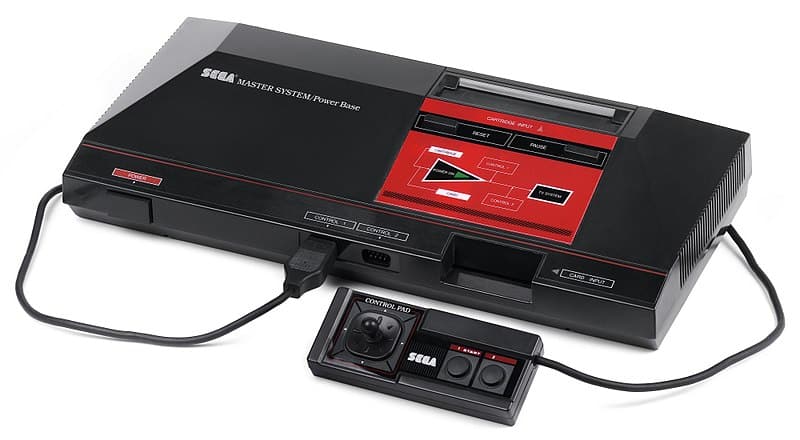
The 3rd generation of consoles, legacy and consequences
The 8-bit generation is one of the most beloved generations, remembered and longed for by all of us who live it. Hours and hours of fun from a new hobby that was laying the foundation for a launch-based industry. When we thought that videogames had reached their maximum splendor, we had no idea of everything that would be in store for us later… But the truth is that what we lived through those years was pure magic:
New proposals, new genres and mechanics, consoles that were squeezed to the maximum and machines with different architectures that fought each other, to get the highest score in the few and first specialized magazines of the time. From simple games of the first batches, to works of art to frame in his later years. What a generation guys! What a generation!
With the Famicom and the NES, Nintendo conquered the world, became all-powerful and unbeatable, only in Europe did it have the most difficult terrain. On a global level, no console could do anything against the NES, whether they were 8-bit or higher, Nintendo created an army of faithful who would wait until the next desktop console from the Kyoto company.
An entire generation was marked by video games, which grew exponentially thanks to consoles. The previous success of arcade games and microcomputers was joined more strongly by that of video game consoles, so the world assumed that this hobby was already consolidated and had come to stay.
At the same time, and as was evident at the end of the 3rd generation, the world axis of video games had moved in a few years from the United States to Japan. The country of the rising sun established itself as the world’s leading consumer and producer of video games, reaching levels that alone surpassed the rest of the world in multiple aspects. This fact led Japanese companies to focus even more on their own market, launching products more and more specific to the tastes of Japanese society and culture. Its market was the most important in the world, consuming 70% of console video games in certain years, they really did not need to go to the West
Unfortunately, the latter caused the Western market to miss out on countless video games and consoles, as products were only suitable for Japanese. Over the years, we Westerners have been treated like novice gamers, unprepared for a Mario Lost Levels or a good RPG. Japanese society had absorbed video games in just 10 years and had integrated them into their roots, forming part of their culture and of themselves, the rest of the world was still decades away from reaching a similar level. Japan became the Super Power of video games that it is today.
The clones, the clones of the NES arrived in a semi-official way in some countries such as Spain and its NASA, and as you all know they have been reproduced in spades and even today it is possible to find in the bazaars a multitude of consoles of various shapes, with an NES clone inside. This fact that today seems funny to us due to the crudeness of the current clones, at the time was a blow to Nintendo, there being worthy competitors that offered us proposals and qualities, quite acceptable for a pre-adolescent kid.
One last point to highlight that this generation gave us is the conceptually definitive idea about what and how a video game console should be, many inventions and frustrated paths of the second generation of consoles were finished. Although Nintendo began its 8-bit journey in Japan with keyboards and BASIC, in a short time it did see that the public wanted a video game console to play, in many different ways, but always to play. This idea prevailed in the panorama of consoles until the controversial multimedia arrived, synonymous with failure in many systems, but which is here to stay until today.

The audience of the 3rd gen. of consoles
In the 1980s, video games were already a mass phenomenon that 8-bit consoles were responsible for consolidating, extending and prolonging over time. Even so, video games were still considered child’s play by adults, and indeed they were. Most of us video game fans were children or young people who were completely dependent on adults to satisfy our video game needs.
It was something normal, video games had become popular for just over a decade and the industry opened up a market in arcades, launching products for a teenage audience that were later adapted to home systems, for the same audience or those younger than We still didn’t have the freedom to go alone to the arcades, video game temples that I miss so much.
On the other hand, the industry, aware of its market niche, did not bet too much on launching products focused on an adult audience on consoles, which were there and very good, but we must recognize that in those years, most of the gamers were young. or very young and, at an age, playing video games was considered inappropriate.
Regarding the female public, we are not going to deceive ourselves, either because they did not have an offer adapted to their tastes or that directly, the industry shamelessly focused (outside Japan) on the male public, the playful girls unlike today Unfortunately, they were a tiny minority.
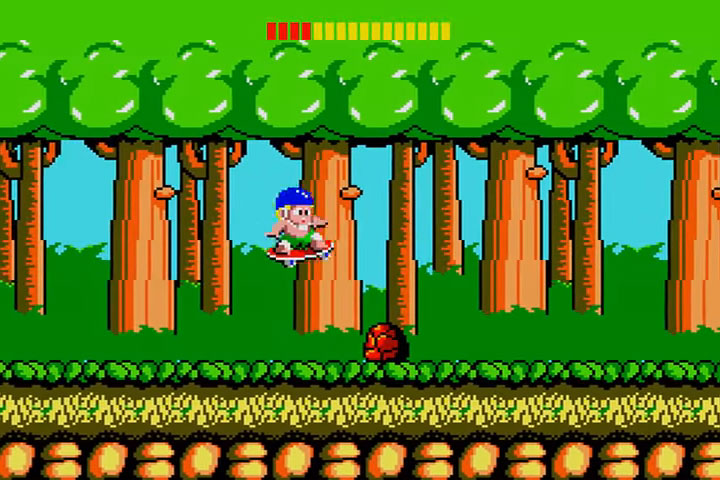
Games of the third generation
What games… What games left us with the third generation of consoles! The vast majority of sagas that are successful today began in the 80’s, whether on arcade machines, computers or consoles. It is not possible to make an accurate summary of an entire generation, it would not be fair and we would leave hundreds of good video games, but let’s remember some that cannot be missing from your collection:
- For SEGA 8-bit: Alex Kidd in Miracle World, Wonder Boy, Operation Wolf, R-Type, Prince Of Persia, Phantasy Star, Sonic The Hedgehog, California Games, Castle of Illusion Starring Mickey Mouse, Space Harrier, Ninja Gaiden.
- For NINTENDO 8 bits: Tetris, Mario Bros, Super Mario Bros 3, The Legend of Zelda, Metroid, Mega Man, Castlevania, Kirbyʼs Adventure, Final Fantasy, Gradius, Metal Gear, Contra, Duck Tales, MicroMachines.
To name a few, really, to name a few and without taking into account authentic gems that came out in 8-bit computers like the Spectrum, since we are talking about video game consoles. All the ones mentioned above are great games, super cartridges that provided us with hours and hours of fun and squabbles with colleagues, making the nights we slept at our friends’ houses memorable. And there are many, many more, because we haven’t even gone into all the ones that didn’t come out of Japan.
As you can see, with the NES and the Master System, great sagas began that endure in our times, but the most experienced of the place will have noticed a great difference between the two machines: The best companies, the most recognized, were on the side of Nintendo. And so it was, Nintendo, an all-powerful company in those years, handled licensing contracts for its Famicom and NES with an iron fist, forcing companies like Square, Capcom or Konami to sign total or temporary exclusivities for its best games.
This caused the NES to have a unique, unbeatable catalog. An assortment of games that no other console has returned to have in such a brazen way. Nintendo pretty much ran the entire video game console market, and if you wanted to publish a game for the NES, you had to jump through hoops. As if this were not enough, the labels had a limit of games that they could launch each year, so they took good care of their products, with Nintendo benefiting from a higher quality of games for its console. These monopolistic and abusive practices caused great discomfort in many companies, which generations later would take their revenge, but in the 80’s, nobody wanted to be bad with Nintendo.
Even so, SEGA proposed a strategy to deal with the Nintendo empire with dignity, launching high-quality products, both its own and those of third parties. Fortunately for them, in those years SEGA triumphed in the arcade market, so the third generation was also characterized by initially having ports of all the successes of arcade machines, both for Sega and Nintendo consoles. This was lost over the years by coexisting with 16 bits, allocating the ports to the latter that could support them technologically.
And it was in this generation, in which Nintendo included a great novelty in its cartridges: The support chips in the cartridges themselves, the classic example being the MMC3 chip from Super Mario Bros 3, but there are many more. This latest innovation, which was quickly implemented by third-party companies, made it possible for the Nintendo console to improve its performance without having to invest in add-ons, as happened later with other consoles. The programmers had the possibility of going further with the help of chips… And boy, did they do it!:
Gradius, Ghostbusters, Gyruss, Arkanoid, Pro Wrestling, Ikari Warriors, MegaMan, Contra, Castlevania, The Legend of Zelda, Mega Man 2, Metroid, Godzilla: Monster of Monsters, Teenage Mutant Ninja Turtles, Mike Tyson’s Punch-Out!!, Mega Man 3, 4, 5 y 6, Super Mario Bros. 2, Super Mario Bros. 3, Kirby’s Adventure, Fire Emblem, Fire Emblem Gaiden, Famicom Wars, Castlevania III: Dracula’s Curse, Just Breed, Metal Slader Glory, Laser Invasion, Uchuu Keibitai SDF, Nobunaga’s Ambition II, Nobunaga no Yabou – Sengoku Gunyuu Den, Bandit Kings of Ancient China, Romance of the Three Kingdoms II, Uncharted Waters, Genghis Khan II: Clan of the Gray Wolf, Gemfire, L’Empereur, StarTropics, Zoda’s Revenge: StarTropics II, Battletoads, Wizards & Warriors, Cobra Triangle, Jeopardy!, Contra, Tiny Toon Adventures, Akumajō Special: Boku Dracula-kun, Salamander…
And they are not all, far from it. Due to a matter of marketing and promotion, most of the public has the mistaken perception that only a few 8 and 16 bit games had support chips, but that perception responds to a commercial strategy in which much emphasis was placed on the use of support chips in those certain games. As you can see, the use of these was much more widespread in most of our favorite games, something that we owe to this generation of consoles.
In short, this generation introduced new mechanics, new genres, new possibilities such as being able to save the game on the cartridge itself and the improvements provided by the support chips. The 8 bits were an explosion of creativity, originality and good games that laid a perfect foundation for our favorite hobby to grow throughout the following generations.
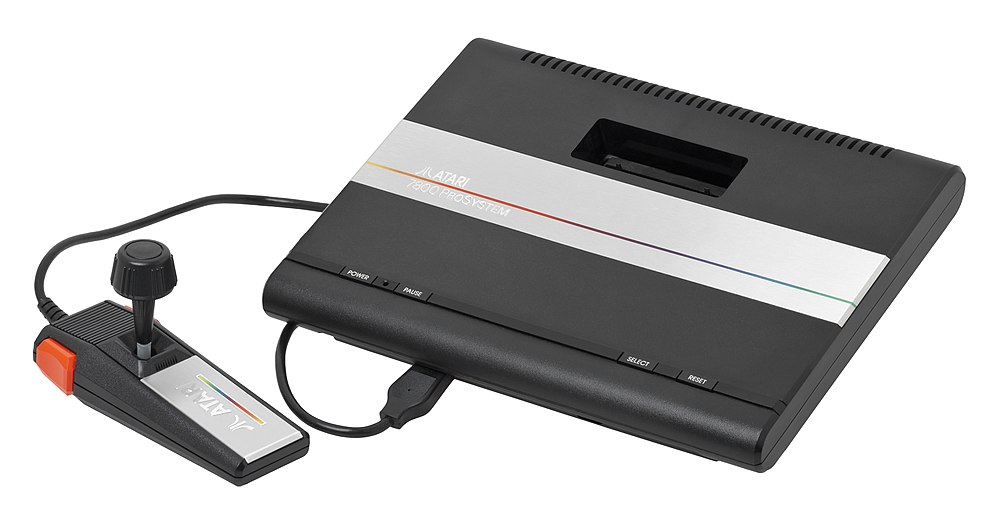
Collect consoles of the third generation
Fortunately for all of us who, in addition to players, are collectors of consoles and video games, the third generation of consoles is a generation that is quite grateful when it comes to expanding our collection to having sold millions of units worldwide. Obviously, we are referring to whether your aspirations are to have a representative sample of the generation with the aim of playing some titles again or knowing the past of video games, if what you are looking for is to collect all the titles of a console or consoles and collect their cartridges with their corresponding boxes, things get very complicated:
Regarding popular consoles such as the Master System or the NES, you can still find consoles in their original box in good condition, at prices that are more expensive every day, but still affordable. Regarding the games, things change a lot, while those of the Master, being the plastic boxes have been very well preserved, finding well-preserved NES boxes is quite complicated. Due to the large number of games that came out for these consoles, getting hold of the entire catalog is practically impossible, don’t try it unless you have plenty of money, it’s that simple.
But what has been said, if you are looking to have a part of history in your collection with a selection of magnificent games, the third generation is a very good option to start collecting consoles and video games. Millions of cartridges were sold and they are quite cheap today, compared to other systems.
In my particular case, in my collection I prioritize systems for lack of time, before video games. If that’s your case, there are relatively few consoles of this generation, but some are really difficult to find and when one goes on sale, prices skyrocket… So be patient.

Buy 3rd generation consoles
As we have already mentioned in the previous point, due to the large number of units that were sold at the time, buying one of the 8 bits from Nintendo or Sega is relatively cheap if you want it just to play, and affordable if you are looking for it with a box in good condition. condition. From Infoconsolas and to be a little more original, we invite you to start with the original Japanese Famicom, in the following link you will see the Famicom for sale right now with updated prices.
Now, if you are of my kind and you are looking to have all the systems of the generation, patience and fewer dinners out, you have to save. As always, the place to go for western consoles is eBay, although for the NES and Master you can check out a flea market or second hand shops, which tend to be around from time to time.
Interesting is the option to go for the SEGA consoles of this generation, aesthetically beautiful and a very important part of the history of consoles.
FAQ Third generation of video game consoles
1983.
Nintendo Family Computer, known as the Famicom. In the rest of the world it was the NES.
14,800 yen at launch.
In Japan.
Arcade machines and the second generation of consoles.
Already developed games of all genres.
The Nintendo Famicom/NES, with 61 million consoles sold worldwide.
Nintendo and SEGA.
Cartridge as the main format, although games were also distributed on cards, tapes and discs.
Children and young audience.
Yes, in the early years they were traced ports.
Yes, the comparisons being epic.
Master System II.
Master System II.
Were there portable consoles in the third generation of consoles?
Yes, they coexisted with consoles like the Game Boy or the Game Gear.
Yes, for a few years Sega and Nintendo maintained their support for 8 and 16 bits simultaneously.
External sources and links
- Console graphics resources: https://commons.wikimedia.org/wiki/User:Evan-Amos

